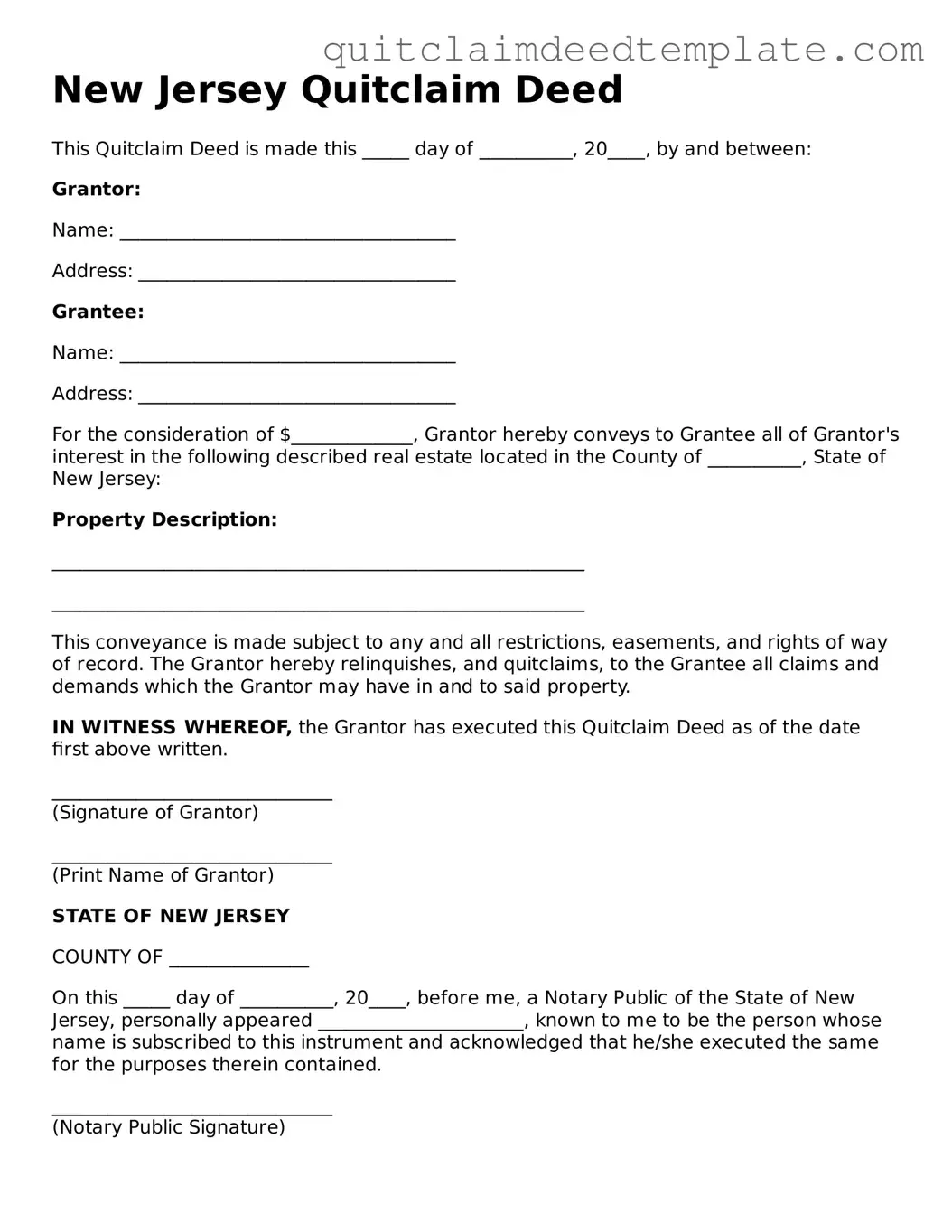Documents used along the form
When transferring property ownership in New Jersey, a Quitclaim Deed is often accompanied by various other forms and documents to ensure a smooth transaction. Each document serves a specific purpose in the process of transferring real estate. Below is a list of common forms that may be used alongside the Quitclaim Deed.
- Property Transfer Form: This form is required by the county and provides essential information about the property being transferred, including its location and the names of the parties involved.
- Affidavit of Title: This document confirms that the seller has the legal right to sell the property and that there are no outstanding claims against it.
- Title Search Report: A title search is conducted to ensure that the property is free of liens or other encumbrances. The report provides a history of ownership and any legal issues related to the title.
- Settlement Statement: Also known as the HUD-1 form, this document outlines all the financial details of the transaction, including fees, taxes, and the final amount due at closing.
- Certificate of Compliance: This certificate verifies that the property complies with local zoning and building codes, ensuring that it is suitable for occupancy.
- Power of Attorney: If the property owner cannot be present for the signing, a Power of Attorney may be used to allow another person to sign on their behalf.
- IRS Form 1099-S: This form reports the sale of real estate to the IRS and is necessary for tax purposes, ensuring compliance with federal tax regulations.
Using these documents alongside the Quitclaim Deed helps facilitate a clear and legally sound transfer of property. It is advisable to consult with a professional to ensure that all necessary paperwork is completed accurately.
